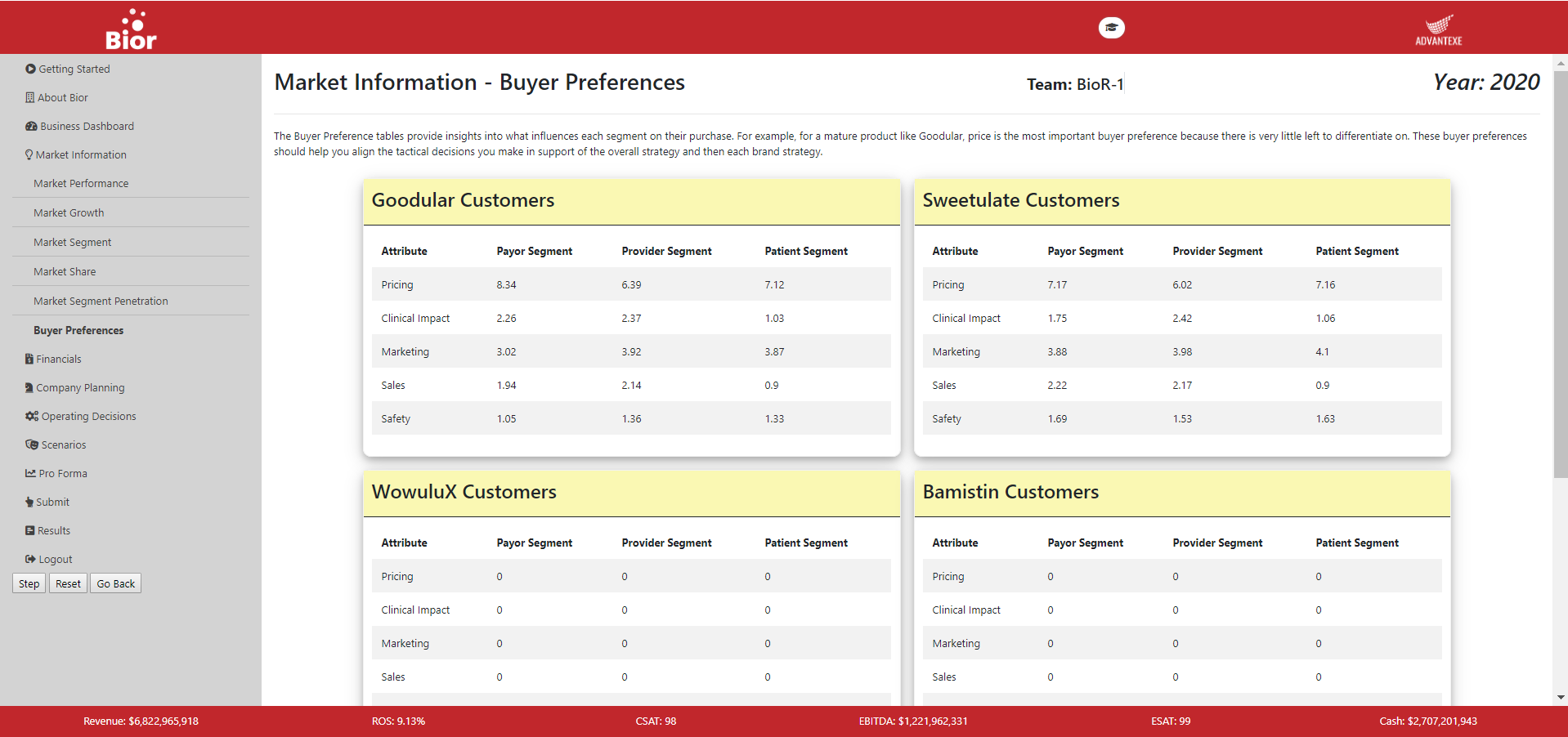How Business Acumen and Business Simulation Can Help
In today’s complex business environment, balancing the product portfolio has become more  important than ever before. The product portfolio is defined as a group of products being marketed and sold by an organization. Sometimes they are related and sometimes they aren’t. An example of related products in a portfolio are the different types of soft drinks sold by Coca-Cola; they have regular Coca-Cola, Coke Zero, Diet Coke, Sprite, and Powerade just to name a few. An example of unrelated products in a portfolio are the different types of products sold by a pharmaceuticals company such as a cardiovascular product, a vaccines product, and a couple of new oncology products.
important than ever before. The product portfolio is defined as a group of products being marketed and sold by an organization. Sometimes they are related and sometimes they aren’t. An example of related products in a portfolio are the different types of soft drinks sold by Coca-Cola; they have regular Coca-Cola, Coke Zero, Diet Coke, Sprite, and Powerade just to name a few. An example of unrelated products in a portfolio are the different types of products sold by a pharmaceuticals company such as a cardiovascular product, a vaccines product, and a couple of new oncology products.
 Last week I had the extreme pleasure of launching one of our latest digital business simulations for a group of high potential leaders in the pharmaceutical industry. Within the new digital simulation, small teams of about 5 people take over as the executive leadership team of Bior Biopharmaceuticals. They are immediately faced with a troubling product portfolio of three existing products and three products in the pipeline.
Last week I had the extreme pleasure of launching one of our latest digital business simulations for a group of high potential leaders in the pharmaceutical industry. Within the new digital simulation, small teams of about 5 people take over as the executive leadership team of Bior Biopharmaceuticals. They are immediately faced with a troubling product portfolio of three existing products and three products in the pipeline.
Of the three existing products:
- One is very mature and is about to go “generic” because it is losing its patent
- One is a newer product that hasn’t met expectations
- One is a product that is about to launch and has high expectations in a competitive class
There are three products in the portfolio which require additional investments which causes stress on the system because there is just so much cash to go around.
This is a classic portfolio and a classic business challenge.
Traditional business acumen tells you to “milk” the two existing products and use the margin to nurture the newer products and the product pipeline.
But things are changing. New, provocative players such as activist investors have added a new voice and new thinking to the conversation. A different way of thinking is to:
- Divest or drop the mature products
- Focus exclusively on the future products
The voice of the activist investor says that companies are wasting value and potential positive cash by not focusing on the new, more expensive, high margin products.
In my opinion, a deciding factor in this debate should come from the voice of the customer which all too often the new thinkers and the activist investors tend to forget about.
The Voice of the Customer and the Product Portfolio

In the learning session we ran last week introducing the new biopharmaceuticals simulation, the best performing team was the one who was able to optimize their portfolio to the size and needs of their targeted customers. A few key learning points:
- The mature product in the portfolio had a total available market (TAM) that had decreased by 63% during the past two years.
- Research from the remaining customers indicated that price was the #1 reason they would buy a product
- The sales and marketing costs had skyrocketed at the same time the price was declining
In addition, the new product which was ready to launch:
- Had a potential total available market that was larger than the older mature product
- Has a higher suggested wholesale price
- Research from the customers indicated that the #1 reason they would buy the product was because of high clinical impact and the results of the product (making price a secondary factor)
Based on these factors, the team that performed the best, took big, bold steps to focus on the new products and evolved the portfolio to eliminate the mature lower margin products even though they still made up a significant amount of the top line revenue.
Associated Costs and Impacts to Profitability of Optimizing the Portfolio
Another reason why “traditional” product portfolio management suggests that company’s “milk” their mature products is because they use up manufacturing capacity that would otherwise go wasted. 30 years ago, that may have been a huge issue, but today it’s not. Today, companies – just like my team did in the simulation – can sell or divest excess manufacturing capacity and utilize contract manufacturing organizations. Many times, these CMOs can produce higher quality products at substantially lower costs increasing profitability even further.
In summary, it’s a different business world and one place where it’s critical to have evolved business acumen skills to better understand managing the product portfolio. The new approach is to be more flexible, take bigger and bolder steps, and focus on the products that customers want and will give you the most value in your value chain.




